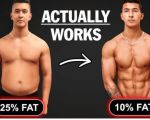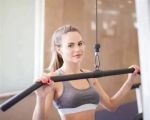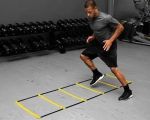The Hottest Fitness Trends You Can't Miss in 2025
1. Virtual Fitness: The Future of Workout From Home
Over the past few years, virtual fitness has completely transformed how we think about working out. As the world became more digital and remote, fitness enthusiasts turned to virtual classes, apps, and online programs. This trend is not just a temporary fix but a long-term shift. In 2025, virtual fitness has reached new heights with live-streamed sessions, virtual personal trainers, and immersive workout experiences. Whether it's yoga, high-intensity interval training (HIIT), or strength training, virtual fitness allows us to work out at home, on our own schedule, with top instructors.
Why Virtual Fitness is Here to Stay
For me, virtual fitness has been a game-changer. The flexibility it offers—working out when and where you want—makes it accessible for busy individuals, parents, and those looking to avoid crowded gyms. Plus, the technology that supports virtual fitness, such as augmented reality (AR) and virtual reality (VR), has created an entirely new, interactive experience. Imagine working out in an interactive, 3D studio from the comfort of your living room! This accessibility and engagement will continue to drive the popularity of virtual fitness in 2025 and beyond.
2. Strength Training: A Comeback for Women
Strength training used to be seen as something for bodybuilders or men, but over the last few years, women have embraced weightlifting like never before. In 2025, women are dominating the strength training scene, and it’s not just about building muscle—it's about feeling strong, increasing metabolism, and improving bone density. From barbells to resistance bands, strength training is now recognized as an essential part of any fitness routine.
The Health Benefits of Strength Training
Strength training is not only about aesthetics; it's about health. One of the most significant benefits is how it increases lean muscle mass and boosts metabolism. This is particularly crucial for women, as muscle mass naturally declines with age. By incorporating strength training, women can combat this and improve their overall well-being. I’ve personally experienced a transformation in how I feel and move—stronger, more energized, and even more confident.
3. Functional Fitness: Training for Life
Another exciting trend I’ve noticed is the rise of functional fitness. Functional exercises are designed to mimic real-life movements—like squatting, bending, lifting, and twisting. These movements help improve strength and flexibility, which are essential for daily activities like carrying groceries or playing with your kids. Functional fitness is becoming a go-to for those who want a workout that improves their overall quality of life, not just their appearance.
How Functional Fitness Works
Functional fitness exercises typically involve multiple muscle groups and are great for improving coordination, balance, and mobility. It’s about more than just looking good; it’s about feeling good and preventing injury. For example, when I started adding kettlebell swings and lunges into my routine, I noticed a massive improvement in my posture and energy throughout the day. These movements not only improved my strength but made everyday activities feel easier.
4. Group Fitness: The Social Element of Exercise
Fitness is no longer just about individual workouts. The social element has become a big part of many people’s fitness journeys. Group fitness classes, whether in-person or virtual, have surged in popularity. From spin classes to boot camps and dance workouts, these group settings provide motivation, accountability, and a sense of community. They also offer a fun way to get fit while making new friends.
Why Group Workouts Are So Effective
There’s something about the energy of a group workout that makes you push yourself harder than when you’re alone. As someone who’s joined several group fitness classes, I can attest to the feeling of camaraderie that drives you to perform at your best. The shared experience can create a powerful bond and elevate the overall workout experience. I find that group fitness classes not only make exercise more enjoyable but help me stay consistent with my fitness goals.
5. Personalized Fitness Plans: A More Tailored Approach
Fitness in 2025 is becoming increasingly personalized. Gone are the days of one-size-fits-all fitness plans. Today, technology and wearables like smartwatches and fitness trackers are helping to create highly individualized workout programs. By tracking metrics like heart rate, steps, sleep patterns, and even stress levels, fitness apps and devices are allowing people to customize their routines for maximum effectiveness.
The Role of Fitness Technology in Personalization
With personalized fitness, you can set your own goals and monitor your progress in real time. I’ve personally found that using a fitness tracker has helped me stay on track by giving me feedback about my daily activity levels and sleep quality. It’s motivating to see how small changes in my routine are reflected in my fitness metrics. Plus, personalized fitness plans allow for adjustments based on performance, helping you avoid plateaus and continue improving.
6. Recovery and Wellness: Prioritizing Self-Care
Recovery is no longer an afterthought in fitness routines. As more people understand the importance of rest and recovery, wellness practices like foam rolling, stretching, and even yoga are being incorporated into daily fitness routines. The focus is shifting toward holistic fitness, where recovery and mental health are just as important as the physical aspect of working out.
Why Recovery Matters
Overtraining is a common mistake that many fitness enthusiasts make. By not allowing the body enough time to recover, you risk injury and burnout. I’ve found that taking the time to stretch, foam roll, and even practice deep breathing has improved my overall fitness results. It’s not just about the workouts themselves; it’s about giving your body the time it needs to rebuild and recover stronger.








